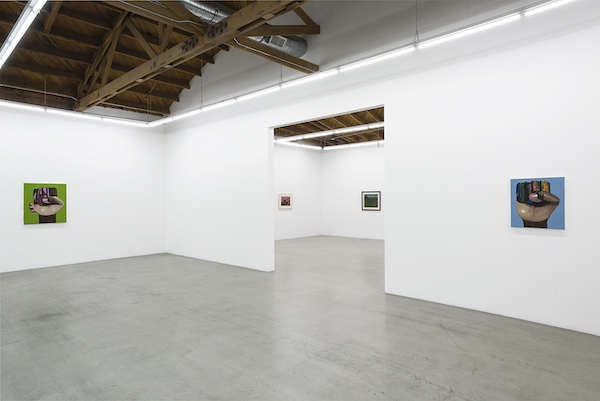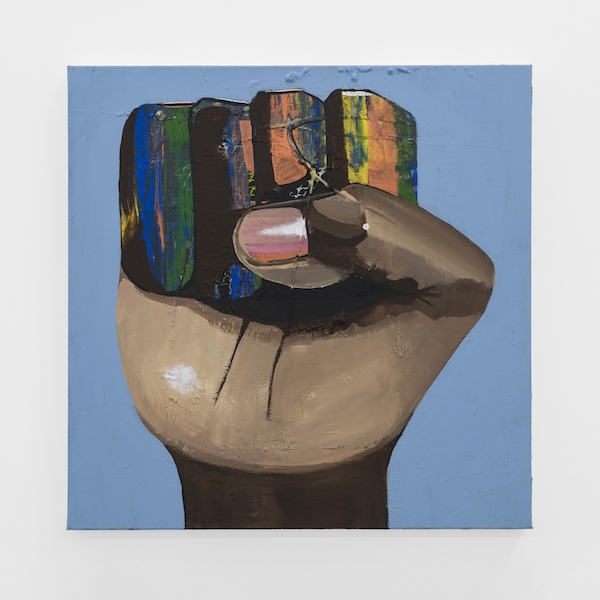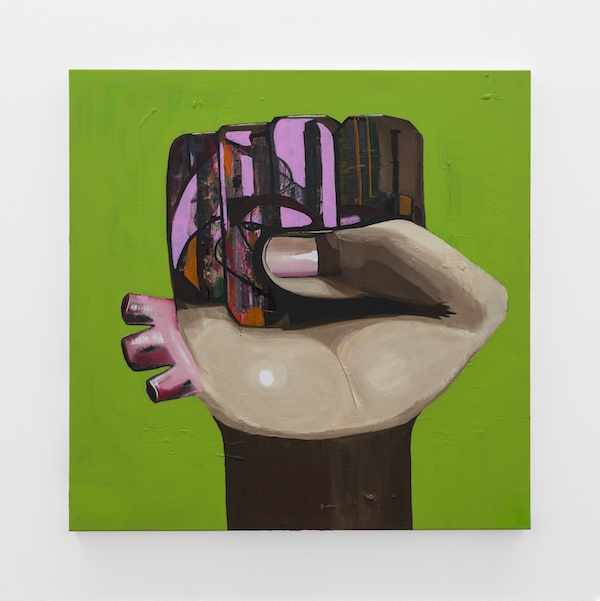“Art is on the frontlines of social change, challenging people’s core beliefs,” says artist Forrest Kirk, “and this is where I live in my work.” An exhibition of nine new paintings exploring the raised fist motif in his richly textured, chromatically charged expressionist style had just opened at Parrasch Heijnen Gallery when we spoke—a show that had already been scheduled for November but was moved up in response to the BLM protests and the conversations they have sparked.

Forrest Kirk, “Fist 1,” 2020
“I immediately was like, no, let’s go ahead and do this now,” says Kirk. “Everyone needs that symbol now.” In fact he’s been returning to that image for more than a decade, as part of a much larger conversation on justice, joy and lived experience manifested across portraiture and architectural compositions, including affecting depictions of police violence. “Even a basic portrait still has to be about something,” he says. “Hope, pain, success, failure, the gamut of life.” And in fact the coexistence of beauty and viscerality in his paintings is a signature part of their power. While existing with a presence of harmony, lively gesture, and exuberant color from “across the room,” on approach the details emerge but by then it’s too late, you have seen. It’s important to Kirk that his work both gives the viewer genuine pleasure, and “keeps you honest,” and that is exactly how the suite of nine fists presents.

“Forrest Kirk: 9 Fists” installation view, 2020
Each fist speaks on its own as a painting, “it says what it wants to say,” as Kirk respects his impulses at the easel and his choreography of rich amber, steely slate, deep indigo, burnt sienna, lime, chartreuse, fuschia and gold. Each fist holds space for other imagery to exist within the contours, hidden figures revealed as a reward for attentiveness, each telling its unique story. But at the same time, the fist has a specific lineage. Raised by Tommie Smith and John Carlos at the 1968 Olympics in Mexico City, it began as a gesture for human rights and became a symbol of Black Power, and now has new currency as part of the Black Lives Matter movement. “Symbols reflect a point of view in time,” says Kirk. “And now that is all coming to a head.”

“Forrest Kirk: 9 Fists” installation view, 2020
Kirk is aware that there is the inherent risk of pushback to speaking your mind, and he’s prepared for that; and as far as making “protest work,” Kirk is clear that it doesn’t always have to be didactic, that “you can stay within your practice but elevate the consciousness.” While Kirk’s commitment as a Black artist to community representation in his depictions of joy and violence, power and politics have been foundational to his work throughout, his dedication to his craft is equally apparent in these fiery, gemlike fist paintings.

Forrest Kirk, “Fist 4,” 2020
“Everything is a political choice,” Kirk says. “Everything has meaning.” The narratives and paradigms of beauty and virtue throughout Western art history have been white (and almost entirely male) for 400 years of the canon. For Kirk, it is very important to “remember there might have been a Black genius whose dreams were stolen, and this is a burden I carry with me. Someone from 300 years ago had something to say! Maybe it comes out, through me.”
All images courtesy Parrasch Heijnen Gallery, Los Angeles, CA


